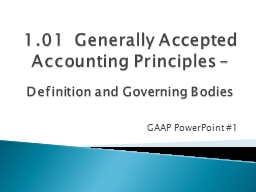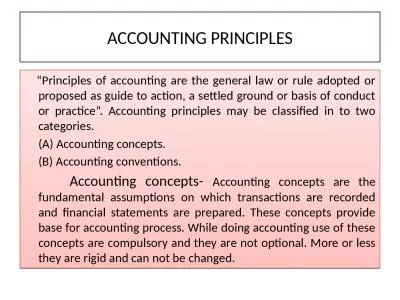PPT-1.01 Generally Accepted Accounting
Author : eatsui | Published Date : 2020-06-16
Principles Accounting Constraints Concepts Assumptions and Principles GAAP PowerPoint 3 Hierarchy of Qualitative Information CostBenefit Materiality wwwfasborg
Presentation Embed Code
Download Presentation
Download Presentation The PPT/PDF document "1.01 Generally Accepted Accounting" is the property of its rightful owner. Permission is granted to download and print the materials on this website for personal, non-commercial use only, and to display it on your personal computer provided you do not modify the materials and that you retain all copyright notices contained in the materials. By downloading content from our website, you accept the terms of this agreement.
1.01 Generally Accepted Accounting: Transcript
Download Rules Of Document
"1.01 Generally Accepted Accounting"The content belongs to its owner. You may download and print it for personal use, without modification, and keep all copyright notices. By downloading, you agree to these terms.
Related Documents

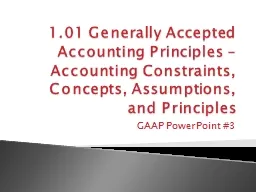
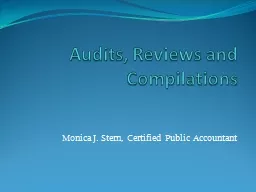
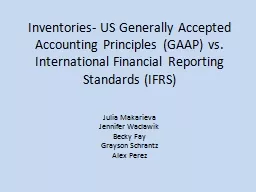
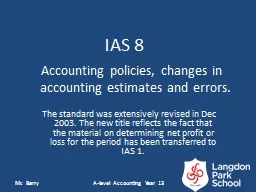
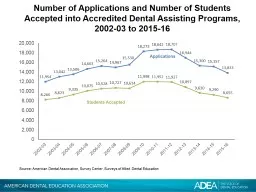
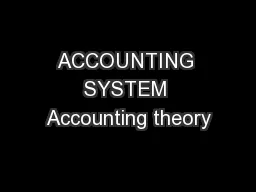

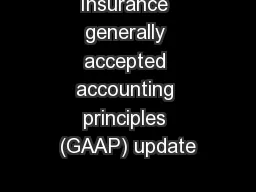
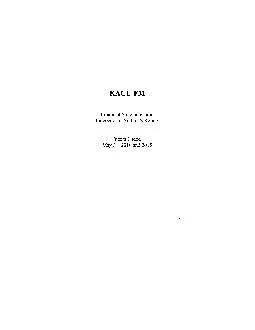
![[EBOOK] - Wiley GAAP 2021: Interpretation and Application of Generally Accepted Accounting](https://thumbs.docslides.com/902540/ebook-wiley-gaap-2021-interpretation-and-application-of-generally-accepted-accounting-principles-wiley-regulatory-reporting.jpg)
